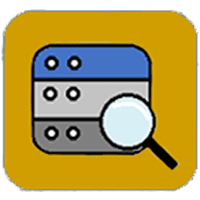Tools and Trainings
Access tool.
Monitoring Trends in Burn Severity (MTBS) includes all fires 1000 acres or greater in the west and 500 acres or greater in the east. The extent of coverage includes the continental U.S., Alaska, Hawai’i and Puerto Rico. MTBS data are freely available to the public.
Online course registration.
IFTDSS for Prescribed Fire Plans course is available anytime on the Wildland Fire Learning Portal. You can enroll yourself in this on-demand online course once you enter the Wildland Fire Learning Portal. Select “How to Use IFTDSS for Rx Burn Plans” on the righthand side.
Access tool.
With a project location, the tool provides historic information and forecasts for temperature, precipitation, and soil moisture. To do this, the tool integrates soils data from National Soil Conservation Service (NRCS), seasonal weather forecasts from the National Weather Service, an ecosystem water balance model, and statistical models of plant establishment developed through ecological research. The outputs are forecasts and historical conditions for a specific site selected by the user.
View bibliography.
This Science for Resource Managers tool provides online, searchable access to multiple published annotated bibliographies on priority management topics for resource managers, currently focused primarily on issues relevant to lands in the western U.S.
Access maps.
Research teams at the USGS Earth Resources Observation and Science (EROS) Center have released a satellite-derived dataset that maps the recent history of the fire-fueling invasive annual grasses spreading through the Western U.S. in greater detail than ever before.
View Fire Facts guide.
This Fire Facts guide was created to provide basic wildfire information, background, terminology, and resources to increase your knowledge and understanding of wildland fire and the ways we can all contribute to better fire outcomes.
Access dashboard.
The RMA Dashboard is a series of tabs to products to help line officers, agency administrators, fire managers, incident management teams, area commands, geographic area coordination centers, and multi-agency coordination groups to make more risk-informed decisions to achieve safer and improved outcomes. These additional analytics are not a replacement for locally-derived and calibrated decision thresholds or procedures as outlined in manual direction (e.g., the WFDSS Decision, Fire Danger Operating Plans). However, it is hoped that these new products can be infused into pre- and post-planning and incident response systems, procedures, and documentation, like the WFDSS Course of Action or Rationale.
Access the MRLC Rangeland Viewer.
Access data.
Collectively managing sage-grouse data collected by eleven states within the United States since the 1950s is very challenging, and analyses of these data present hurdles due to its large volume and breadth of methods used to record field observations. We present software that aids in the compilation of these disparate databases that can support population analyses and management of sage-grouse by states.
View the portal.
This interagency burn severity portal provides comprehensive access to federal burn severity data. Information about the various burn severity mapping programs and access to current and historical data products are provided.







